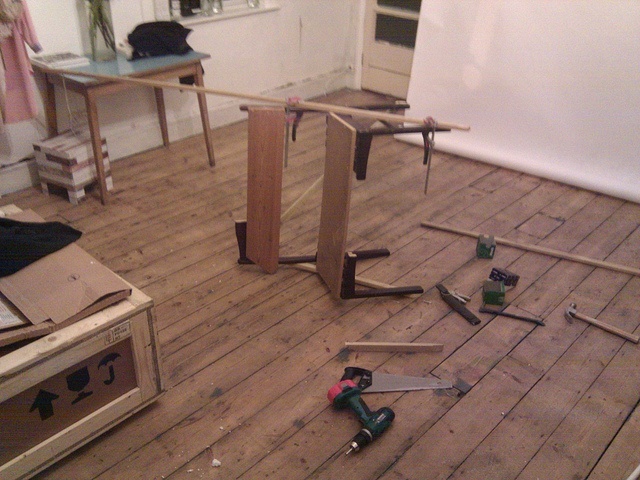While plywood is an amazingly strong engineered material, it is not impervious to damage. It would be nice if it were, but that’s not in the cards. Rather, we need to be ready to repair plywood that has been damaged, especially when it has been damaged in a critical area.
There are several types of damage that plywood can incur, but I’m specifically referring to dents, surface cracks, and bubbles. Water damage, which attacks the edges of the plywood first, generally requires the replacement of the piece (although reinforcement is possible in some cases). Cracks that go all the way through the plywood are virtually impossible due to the way plywood is made. The next veneer layer would check the crack, regardless of how seriously the surface was cracked. Major damage, where plywood is broken, always requires replacement.

Dealing with Bubbles
Bubbles form in plywood when there is a localized failure of the adhesive used to attach the layers of veneer. Moisture enters the wood through an unfinished side or pinholes in the finish and dampens the surface veneer, causing it to expand. The bubble is formed as the wood seeks space to expand.
Since the bubble is only in the surface veneer, it does not destroy the structural integrity of the plywood or what has been made out of it. However, it can expand, or the bubbled veneer layer can begin to break if not taken care of. In boats and other structures that are subject to water, repairs should be accomplished as soon as possible.
The delaminated bubble veneer must be removed from the plywood to effect repairs. This is best done by cutting around the edges with a utility knife or chisel, cutting out an area slightly larger than the bubble. Be careful as you cut not to damage the veneer layer beneath. Allow the area to dry before filling the dent left by removing the outer layer of the veneer.
Repairing Dents and Cracks
Dents, surface cracks, and the indentations left by bubbles can be filled with high-solid epoxy or putty. You should always slightly overfill the indentation, as the epoxy will shrink slightly while setting. Once set, the epoxy can be sanded as if it were wood. Please note that it cuts a bit slower than wood, so if you are not careful, you will take more material off the plywood around the repair than in the repair itself. As long as the sander is sitting flat on the surface, this should not be a problem.
Some people are satisfied with the finish they can achieve by simply filling the indentation with epoxy and sanding it. However, on larger indentations, such as those from bubbles, a layer of fiberglass cloth should be put over the repair to help it blend with the surrounding surface. This layer of cloth can be attached with epoxy or fiberglass resin. Epoxy is more flexible, so it will better resist delamination caused by flexion.
Paint the epoxy onto the repair area, place the fiberglass cloth on it, stick it down, and then cover it with another layer of epoxy. Once cured, the epoxy and fiberglass cloth should be sanded, feathering it to blend with the adjacent surface. Finish the repair to match the plywood’s original finish.




